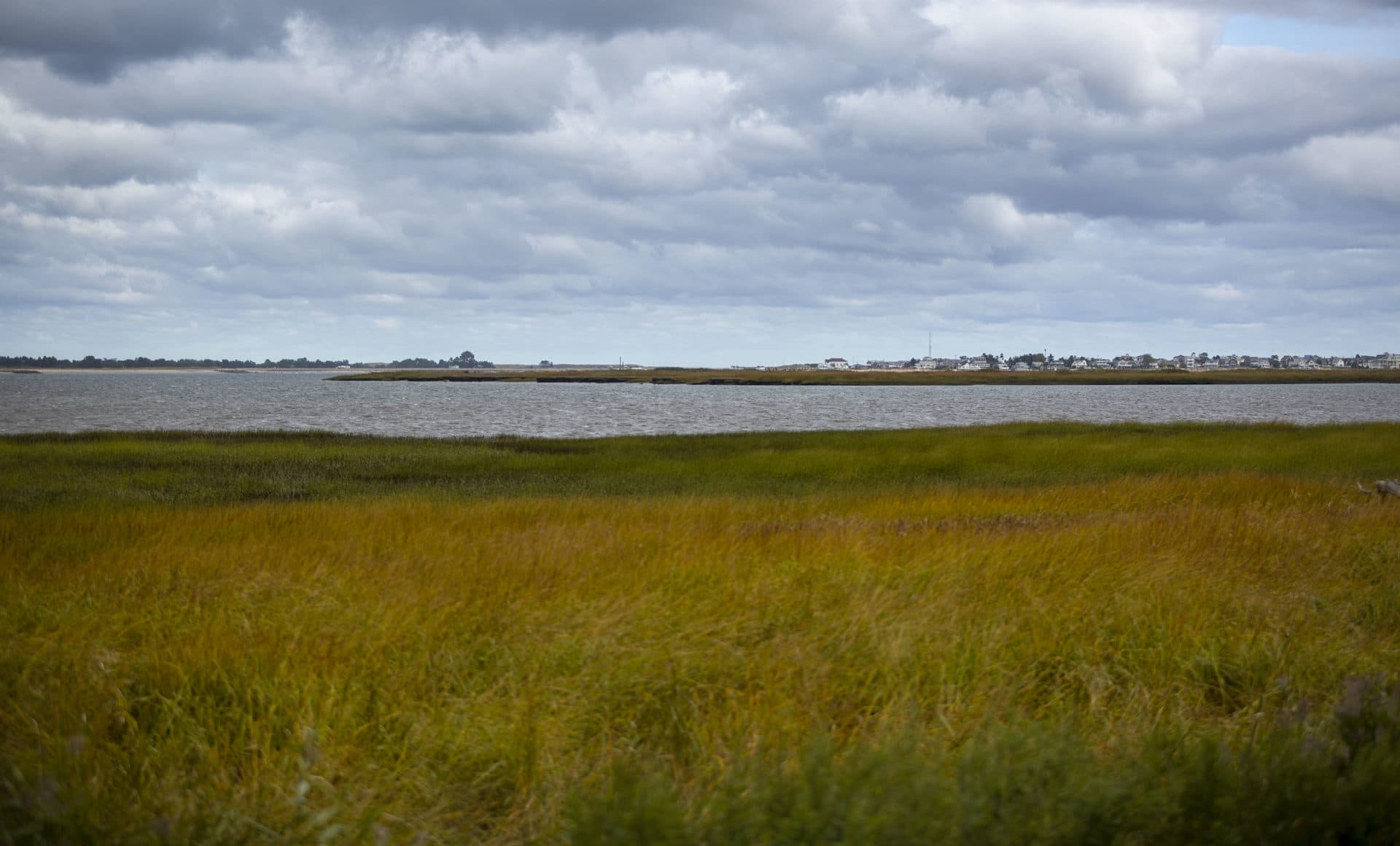Advertisement
How a little mussel could help save a Merrimack River salt marsh
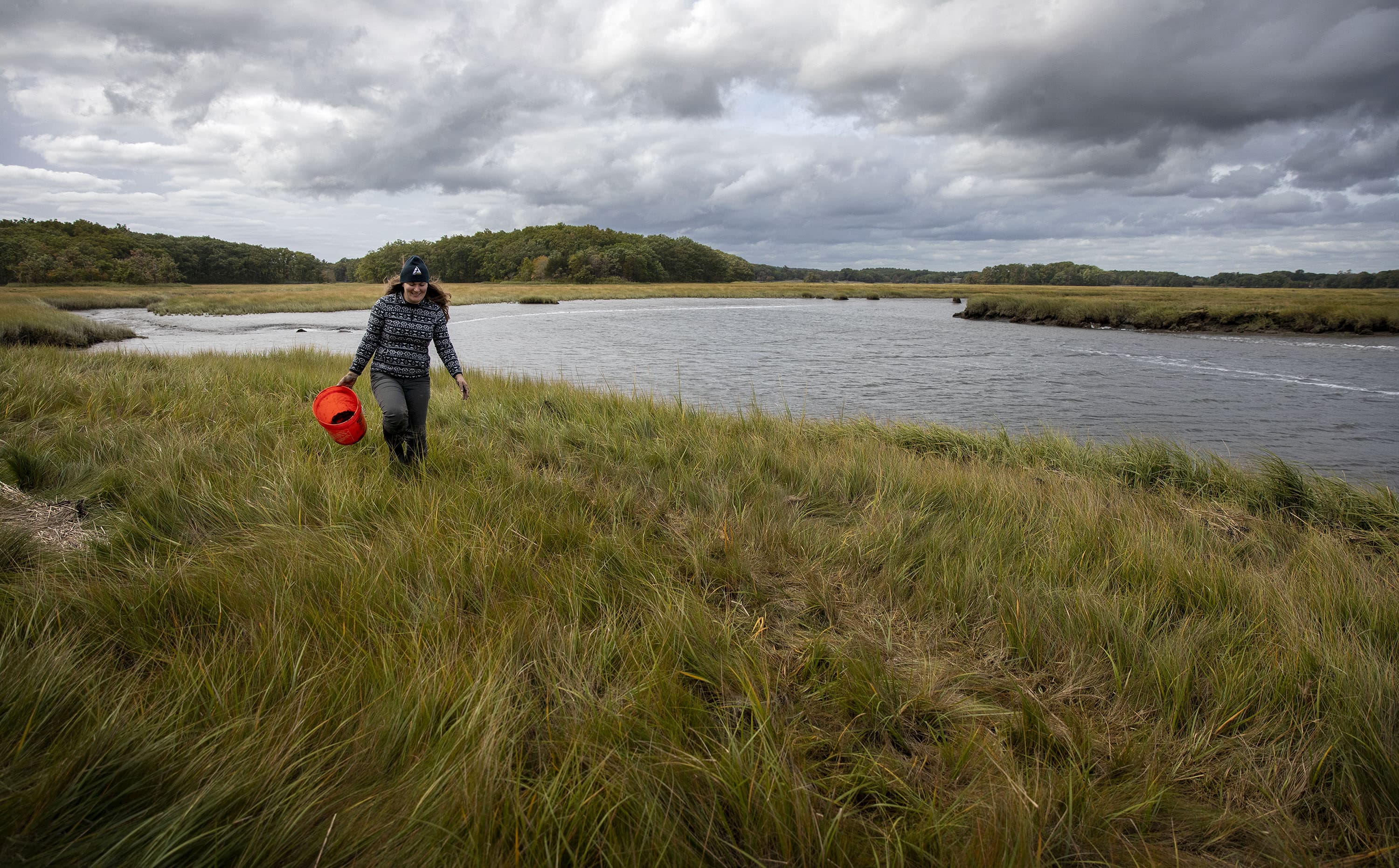
Annalee Tweitmann stood ankle deep in mud, hands wet with mud, peering at a steep riverbank of mud.
Mud comes with the job, she said, and she's fine with that. Because mud is where the mussels are.
Tweitmann, a coastal restoration ecologist with Mass Audubon, had come to a salt marsh in Rowley, Massachusetts, to hunt for a creature called the ribbed mussel. Her plan was to transplant some of them from this relatively healthy marsh to an unhealthy marsh a few miles away, which is eroding into the Merrimack River. It’s part of a pilot project to see if mussels could help hold that collapsing marsh together.
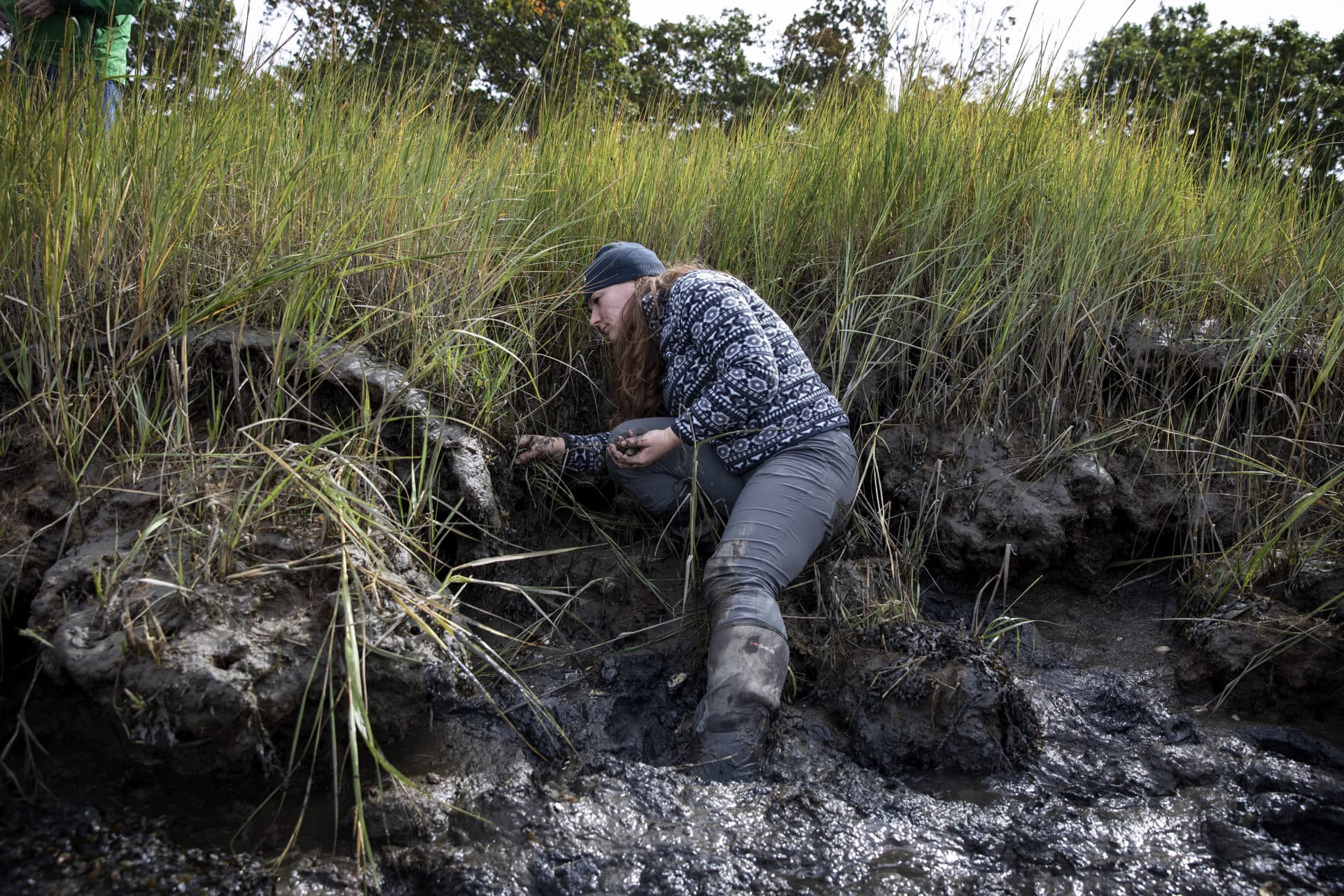
Massachusetts has about 45,000 acres of salt marsh — coastal wetlands that are regularly flooded and drained as salt water ebbs and flows with the tides. And these marshes are "incredibly important for so many reasons," said Tweitmann. They provide habitat for birds, shelter baby lobsters, filter water and protect homes and roads from storm surge. They also store literally tons of carbon in their dense peaty soil — 3-5 more tons per acre than tropical forests, according to the National Oceanic and Atmospheric Administration.
But Massachusetts has lost about 41% of its salt marsh since 1777 — Boston alone has lost 81% — a devastating legacy of human intervention. Colonists used salt marsh grass for roof thatch and animal feed; to increase production, farmers dug ditches and built berms to manage tidal flow. A century later, landowners drained marshes to control mosquitoes or build houses.
The result, said Nancy Pau, a wildlife biologist at the North Shore's Parker River National Wildlife Refuge: "Some of our marshes are too wet and some of our marshes are too dry, and they have equally negative consequences in opposite directions."
Pau and her colleagues have been working for years to restore salt marshes, but many remain under threat from sea level rise, development and pollution. Research by the Trustees of Reservations found that 23% of the salt marsh on the South Shore could disappear by 2050, and 90% of the high marsh on the North Shore could convert to low marsh by 2070, losing much of its storm-buffering, habitat-providing, carbon-storing oomph.
Advertisement
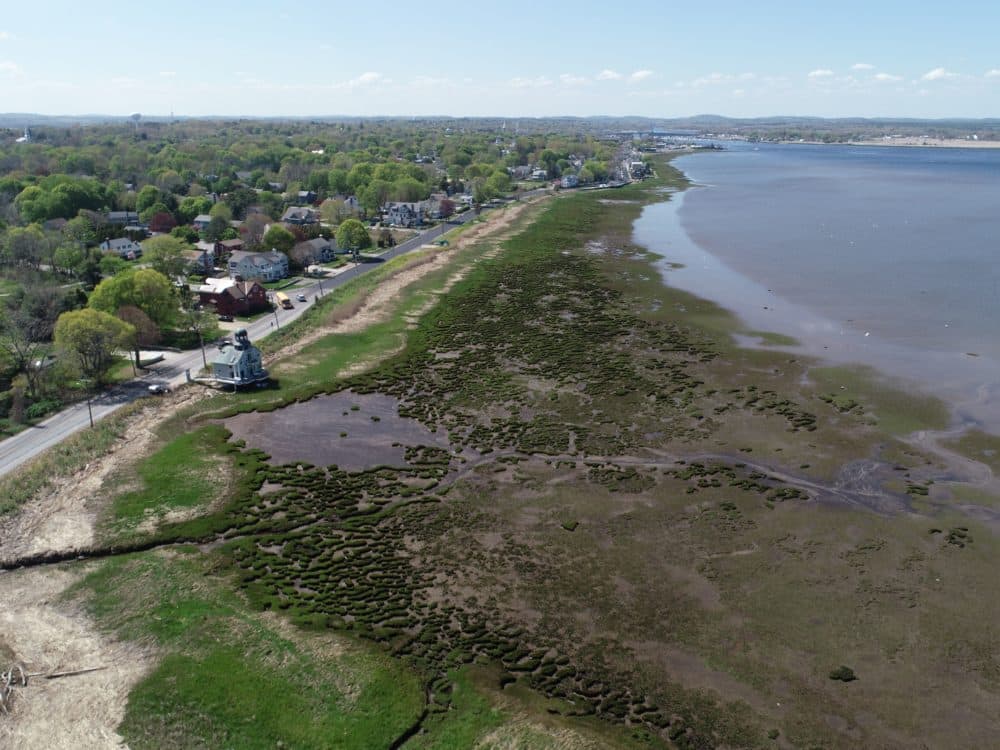
"I can't tell you a marsh that's not been impacted by some sort of legacy of human ditching or alteration," said Cynthia Dittbrenner, director of Coast and Natural Resources at the Trustees of Reservations. "If our marshes were healthy, they would be more resilient to these changes that we're seeing as a result of climate change. But because they're not, they're even more vulnerable."
Maybe a little mussel muscle can help
Ribbed mussels are native to salt marshes — they live nearly buried in the peaty mud, almost invisible to the untrained eye. "When I first started this job, I was asking around if people knew if there were ribbed muscles here," said Tweitmann. People mostly shrugged. "But when we came down into this creek, we realized there are hundreds, if not thousands...There really are a lot of them. They're just very sneaky."
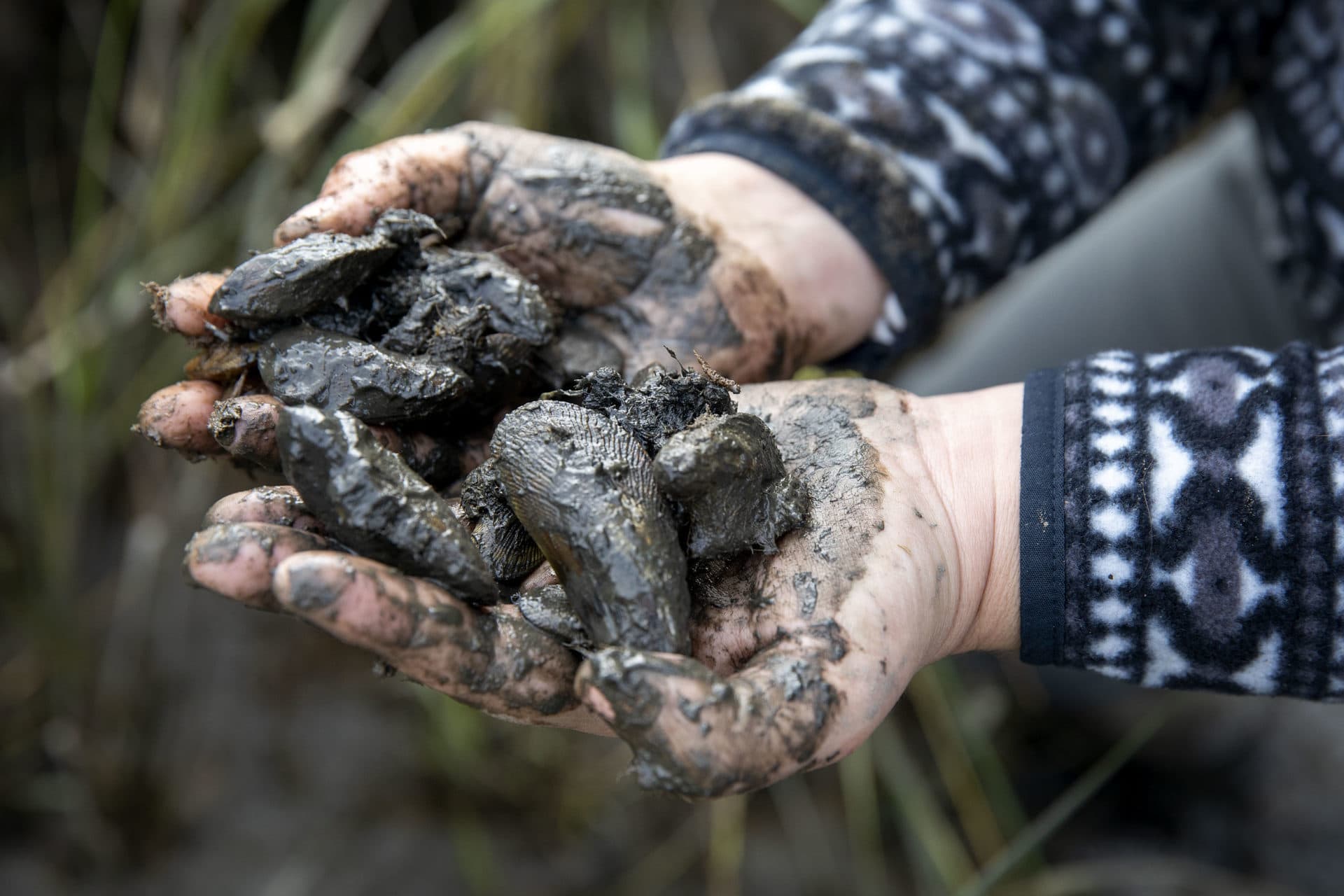
Tweitmann plucked a mussel from the riverbank and wiped off the mud. Its shell was brown, with raised ribs like corduroy. Clumped on the shell were thin sticky filaments called byssal threads, which hold both the mussels and the marsh in place.
"Some people actually call ribbed mussels 'habitat engineers,'" said Tweitmann. When mussels attach their byssal threads to plant roots, the threads basically glue chunks of peat together. "That's the number one reason why we think they could be really great in a restoration project — is they can really stabilize a very unstable salt marsh."
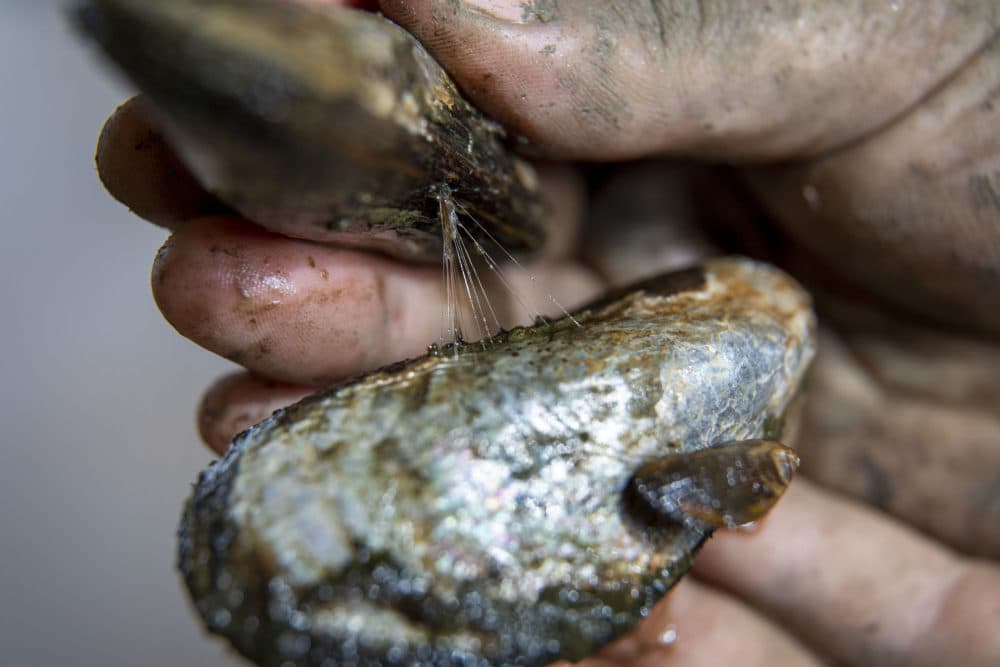
Ribbed mussels have another advantage: they filter excess nutrients like nitrogen from the water.
"Nutrients are very necessary for plants to grow. But when you have too much, it can be a bad thing," said Tweitmann. When salt marsh plants are exposed to high levels of nutrients, they grow tall and lush without their roots digging deep for food. The shallow-rooted plants become unstable and vulnerable to erosion.
Ribbed mussels may help by cleaning up the water.
"I call them super mussels," said Danielle Kreeger, a shellfish expert at the Partnership for the Delaware Estuary, one of the leaders in ribbed mussel restoration. "They can tolerate a temperature range from zero to 56 degrees Celsius, they can tolerate a wide salinity range. They are really tough buggers once they get established."
Using ribbed mussels to restore marshes and shorelines is a relatively new idea — there are a just handful of projects along the East Coast and at least one other one in Massachusetts. But they show a lot of promise, said Kreeger: growing even a small population in a degraded salt marsh can significantly slow erosion. And unlike oysters, ribbed mussels aren’t really good to eat, which means people won’t try to harvest them.
But that’s also what’s holding mussel projects back, said Kreeger. Because ribbed mussels have no commercial value, it’s hard to buy baby ones. But there are hatcheries that grow ribbed mussels, and Tweitmann expects more to emerge as interest in the creatures grows.
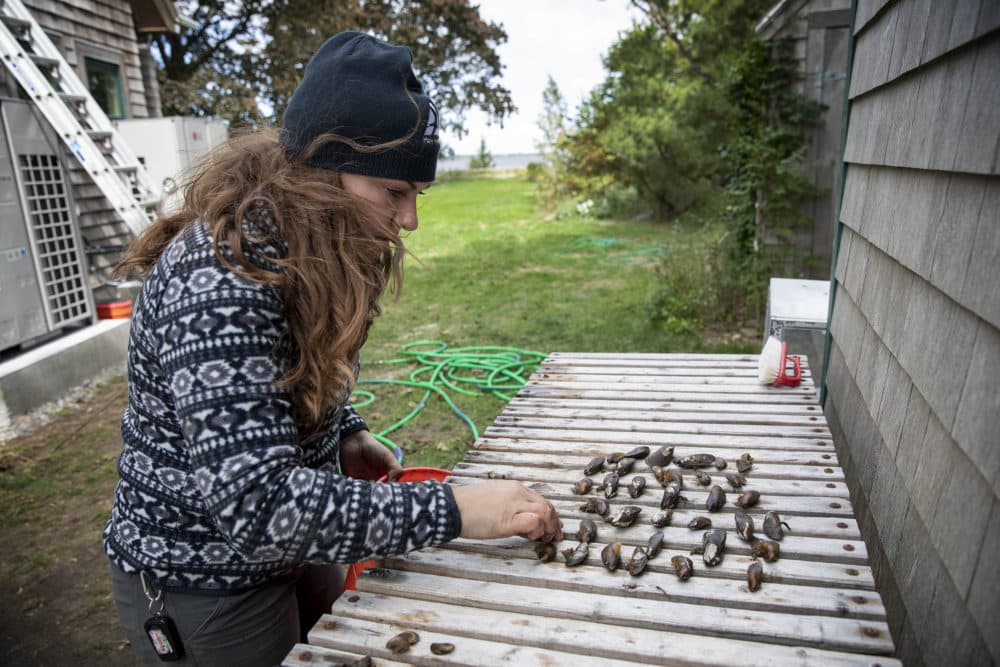
Tweitmann's immediate concern is determining whether the mussels she just harvested can even survive in the severely degraded salt marsh at Joppa Flats in Newburyport. The marsh is in bad shape: it's small to begin with, and its location at the mouth of the Merrimack River leaves it directly exposed to both pollution from the river and storms from the coast. It's now riddled with sinkholes.
On a recent windy day, Tweitmann climbed down the bank of the eroded marsh to start transplanting the mussels. She stabbed her shucking knife into the peat and wiggled them into place, one by one.
Aside from Tweitmann’s experiment, there are no ribbed mussels in the marsh at Joppa Flats, and she isn’t sure why. Salt marsh is their traditional habitat, but maybe there’s not enough peat for them to cling to, or maybe the water’s too fresh, or ice scours them off. The pilot project will test whether this batch survives the winter.
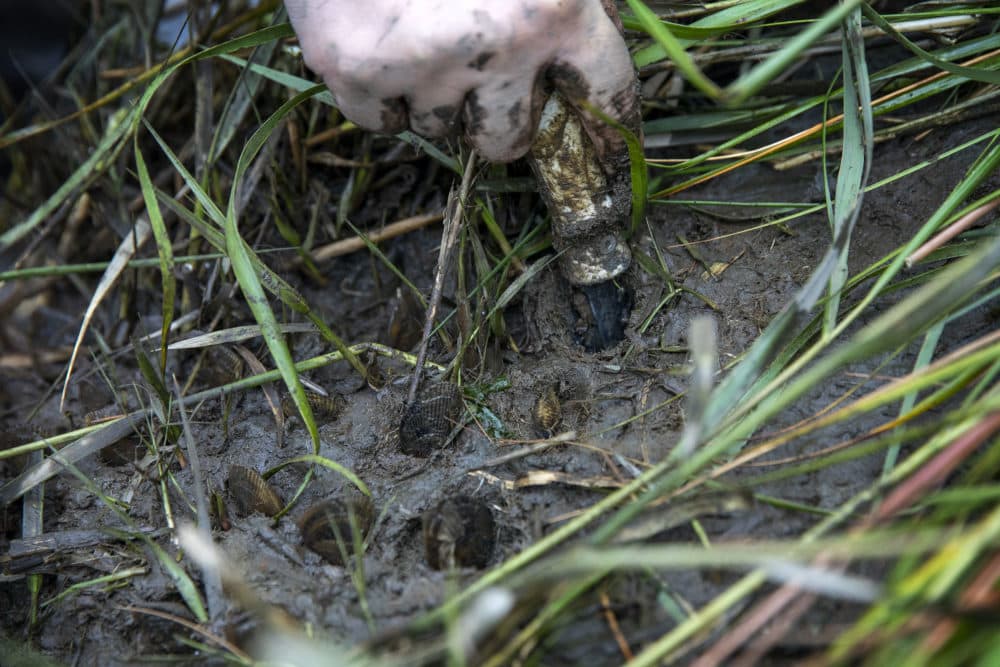
If they do, she plans to scale them up as part of a larger living shoreline project, which could hopefully be installed in 3-5 years.
"If we could stop the erosion by using them to stabilize the marsh, if we could use them to improve the water quality, I am really hopeful that it will work out, and these can stop the salt marsh from disappearing," she said.
She points out that the marsh at Joppa Flats is protecting the nearby homes and businesses, including the adjacent Mass Audubon education center. And as climate change brings higher water and storm surge to the coast, saving marshes like this one, now, may be one of the best ways to protect ourselves in the future.
